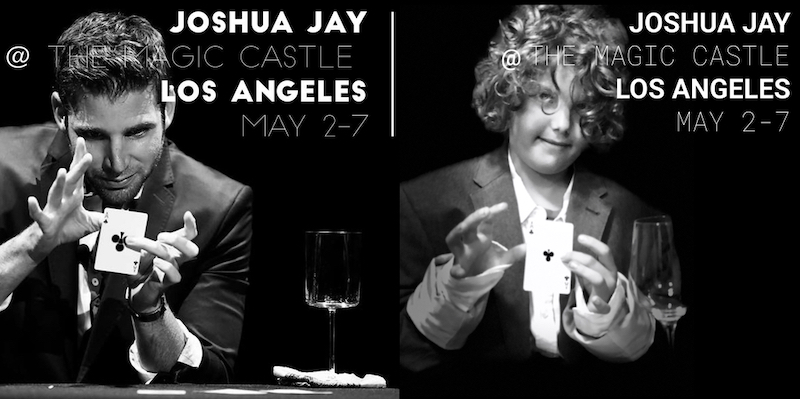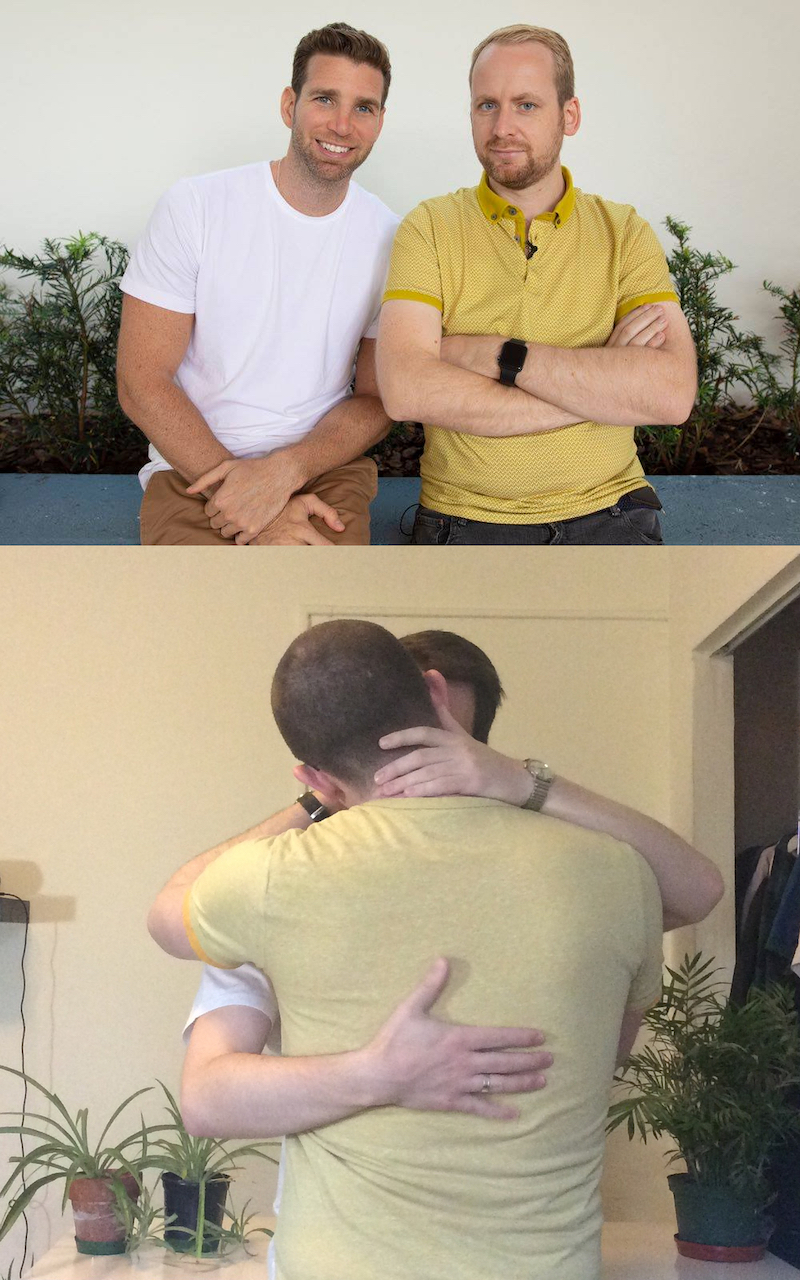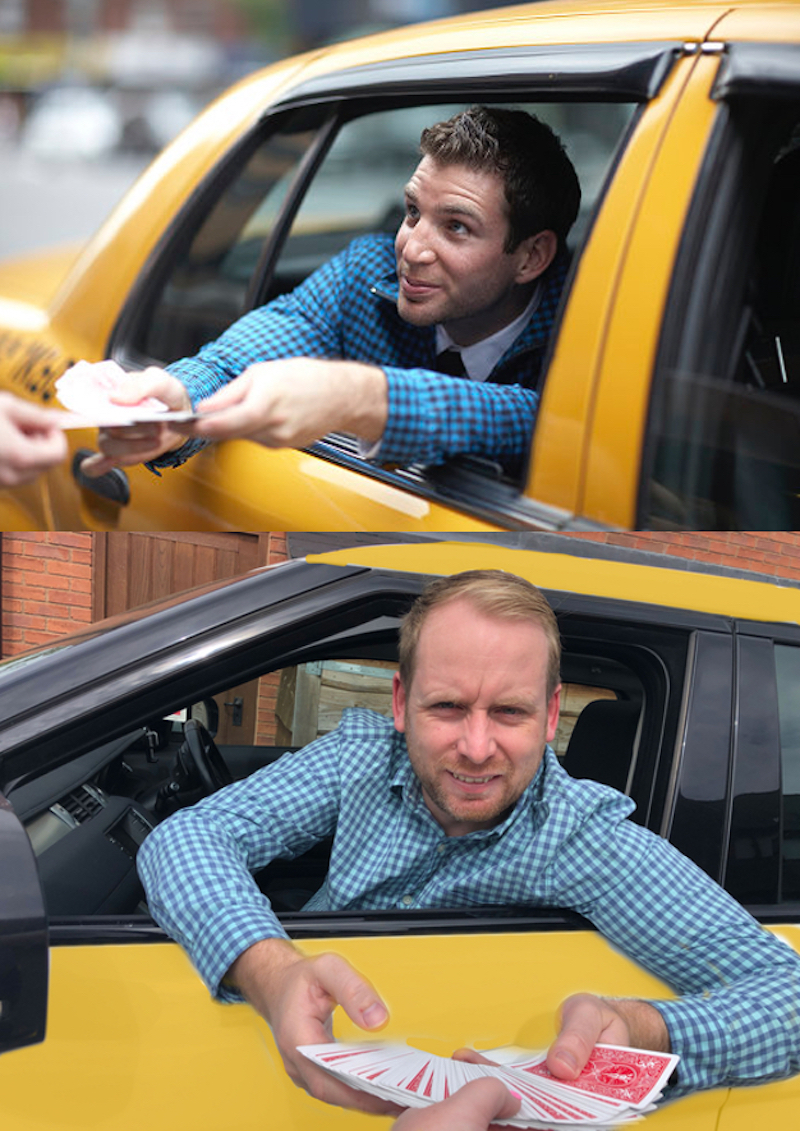The Non-Binary Binary Prediction Principle
/This is a variation on a Karl Fulves prediction idea that came to me from reader, Leo Reed. It’s not the sort of thing that you can base a whole trick around, at least not in my opinion, but it’s something that can be an interesting added element to a routine in a few different ways.
Gender Is Fluid
Here is the principle in its most basic incarnation. You would never do this as a trick by itself, but just to understand the concept, here’s what it might look like.
There is an envelope on the table. You tell the person it’s a drawing of a sign on a public restroom door.
“Do you think it’s a men’s room or a women’s room?”
They answer. You cut open the envelope and remove the paper from the envelope and they were correct.
Method
This is the prediction inside the envelope.
The prediction should be in an envelope of approximately the same size. Depending on their response, you will cut open the envelope to reveal the prediction and, in the process, cut off the incorrect part of the prediction.
So depending on where you cut you will have one of these options.
You don’t want to use a 3X5 card or something like that for the prediction. If you do, it will seem incomplete when they see it afterwards, because it’s not the dimensions they’re used to. Instead you want something that feels longer than you’d expect. So once you cut off the incorrect part, the remaining piece seems to be of normal dimensions.
Simple, and as I said, probably not that great in isolation.
Here are some uses of the principle that might be a little more interesting.
Gender Reveal
You could predict the gender of someone’s unborn baby. Have the prediction set up so it says, “It’s a boy!” at the top and “It’s a girl!” at the bottom. Same stick figure drawing.
The “when” and “where” of introducing the envelope and then opening it are going to depend on your relationship with the parents and when they end up learning the sex of the baby themselves.
Ideally you’d want them to have the envelope in their possession before even they know the gender of the baby. They don’t know what it is. It’s just some mysterious envelope you had them sign and told them not to open. Then after they learn what it is you come over again and open the envelope to reveal you knew all along.
It may be hard to orchestrate that all in reality. But it’s an interesting idea.
Pendulum Proof
I’ve seen pendulum routines where a pendulum will go back and forth over a male’s image and in a circle over a female’s image.
“Skeptics will say you’re moving it yourself somehow without even knowing it. That’s nonsense, of course. Ideomotor effect? More like, idiot motor effect! Take that James Randi! Anyway, I can prove it’s real. I have a simple stick figure drawing of a man or woman inside this envelope. I don’t even know what it is myself. I sealed one man drawing and one woman drawing in an envelope before I left home, mixed them up randomly, and took just one with me. So I don’t know what it is and you don’t know what it is. I don’t want you to try and guess what it is. Just hold the pendulum and let it tell us what it is.”
Celebrity Paraphilic Infantilism Gag
I have a friend who does magic professionally who is using this in the following way. He tells people he has been learning to draw caricatures of celebrities. It’s his true passion and he hopes to one day drop magic altogether, but until then he has an effect that combines the two. He brings out a notepad and a sealed envelope. The first half of the notebook has different male celebrity names on each page, the second half has different female celebrity names on each page. He has one person open the notebook to a male name and another person open the notebook to a female name.“Inside that envelope is only one sketch of a celebrity. There are 100 celebrities in that notebook. You are each thinking of one random celebrity. We’ve narrowed 100 down to two. Now we need to select one winner from those two. How should we do it?”
This is the fun part. He lets them decided how to pick the winning celebrity (or winning spectator depending on how you want to frame it). Maybe they flip a coin. Maybe they play rock paper scissors. Maybe they arm wrestle. Maybe they have a 30 second verbal debate and a third-party at the table is the judge. Maybe they see who can throw an olive the furthest. It can be anything. And it’s not like you could have made an educated guess as far as which person would win because you let them decide the nature of the competition.
So now you know who won, and you also know if that means you need to remove the male or female version of the image.
Your prediction is set up like this.
If you need to reveal the guy drawing, you cut off the bottom of envelope/prediction and pull the sketch down and most of the way out of the envelope to reveal the stick-man, but not the name yet.
“There he is,” you say. “It’s a pretty good likeness, I think. I’m proud of it.” This is like the “baby gag” in magic, and was in Leo Reed’s original write up of the principle to me. You milk that for what it’s worth, then you say, “You don’t think it’s accurate? Did I not get it right? Who did you pick?” They name their celebrity and you pull the picture out the rest of the way and show the name. “That’s exactly who I thought. How could you not see that? Maybe the chin isn’t completely right, but it’s pretty close.”
If you need to reveal the girl image, you cut off the top of the envelope/prediction and pull the sketch up and out of the envelope to the “waist” of the image. “What do you think, does that look like your celebrity?” You go back and forth on this for a bit. You ask them to name the celebrity for the first time “for the people who live under a rock and can’t recognize my drawing.” They say, Natalie Portman. You then pull up more and reveal the stick figure is in a dress, “proving 100% I knew exactly who would be chosen. Famous dress-wearer, Natalie Portman.” They’re of course thinking this is just more of a gag because you had a 50/50 chance of it being a woman. You then pull the prediction out all the way to reveal the name.
This, I think, with the gags and stuff, is not the sort of thing I would do for friends. But I do like that part where they decide how winner will be decided between the two celebrities. That feels like it could lead to some genuinely spontaneous moments.
The method is, of course, one Svenpad®️ (or similar) with men’s names in the top half and women’s in the bottom, or you may prefer to use two separate pads.
Picklepants
“Whenever my niece stays with me, she tells me a bedtime story. I said that right. I don’t tell her one. She tells me one. Each one is about some royal family living in some mystical land somewhere, but they’re totally fucking insane. They all have these crazy names and get involved in totally messed up shit. Last week it was something like King Queefingham is building giant robot dogs to devour the moon or something. She has a crazy imagination. I keep a list of the characters she’s created in my phone. They’re strangely evocative and I’ve found out something weird that seems to work much more often than it should.”
You ask your spectator to name a number between 1 and 100.
You open your phone and go to your list of character names and have them read off some of the names they see there. King Sparkles. Shadow Charm. The Caramel Star Twins.
Next to the chosen number 78 is Picklepants.
“Picklepants. That was a good story if I remember correctly.”
You draw their attention to an envelope that’s been on the table the whole time. “I asked my niece to draw one of her favorite characters for me to show you guys tonight. One that she thought you’d be drawn to in some way. I have no idea what she drew yet. Let’s check…, oh wait. In the Picklepants story there was a king and his daughter, the princess. Do you think it’s the king or the princess?”
They say the princess.
You open the envelope and slide out the picture. It’s a crayon drawing of a stick figure in a dress with a crown.
“Yup, that’s her. Princess Picklepants. That’s crazy.”
They’re not convinced so you turn over the paper and there it says, “Princess Picklepants.”
The basic idea for this came out of Leo Reed’s email to me. I’ve expanded the story and tweaked the methodology and the nature of the prediction.
This uses the Digital Force Bag app, of course any other way to force “Picklepants” would work just as well. Cards with names on them, a forcing notepad, an actual force bag. In my opinion the phone makes the most sense.
The prediction paper is set up like this. This is on the front side.
Then turn over the paper end for end so the head is at the bottom of the page and write this.
If your spectator says it’s the princess you’ll refer to the character as Princess Picklepants. You’re not cutting off any of the image, just the words “the king” on the back.
if she says it’s the king you say, “Ah yes, Picklepants the King. An unforgettable character.” And when you cut open the envelope you’ll be removing the word “princess” as well as the bottom of the dress and legs from the image.
Combining a small, obviously free choice with a force is something I wrote about in Magic For Young Lovers. It’s very powerful. They can’t just say “the phone (or the notepad or whatever) was gimmicked” because that free choice somewhat lessens the importance of the force procedure. And the fact that the name of the character is written so large in a way that is apparently unalterable makes this a nice combination of methods.
There you have it. Thanks to Leo Reed for sharing the idea of turning a skirt into legs, and to Karl Fulves for starting us along this path with his trick, “How to Predict the Super Bowl” in his Big Book of Magic Tricks. If you’re interested in that you can find out more in a post I wrote three years ago about some modifications to his prediction system.































